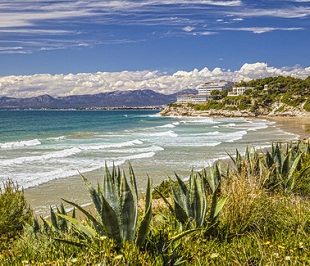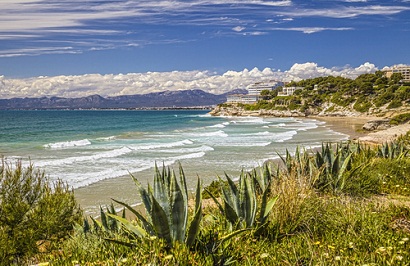
From Figueres to Port Bou – A stunning journey in Catalonia
The unpretentious and somewhat scruffy town of Figueres not far from the French border in Catalonia boasts a great triumph; it is where the great impressionist painter Salvador Dali was born. While modest and fairly non-descript in its aesthetical appearance, Figueres is an interesting town.
For starters there is the museum, which is dedicated to the life and works of Salvador Dali. Adding further intrigue to the tale is the fact that the legendary artist actually designed the museum himself. Although Salvador Dali is not the only famous Spaniard to be born in this essentially working town that is situated inland from the glamorous and affluent Costa Brava seaside resorts of Calella de Palafrugell, Llafranc and Tamariu.
Narsis Estarriol, who invented the first machine powered submarine and Monica Naranjo, who is one of the best selling Spanish singers over the last two decades, both have roots in Figueres.
As well as the Dali Museum, other main sights in Figueres are the Church of Saint Peter and the old castle built in the 18th century by Ferdinand V1. Though despite the town’s traditionalism and unpretentiousness, a recent claim to fame for Figueres that has helped propel the town into the 21st century is the fact that it has been connected to Spain’s state-of-the-art high-speed rail network, which takes traveller to Perpignon, not far from the Spanish border in France in practically no time at all.
Although the eastern side of the Spanish/French border is a sheer pleasure to experience and speeding by all delightful towns on villages in this beautiful part of the world on a high-speed train, is not recommended if you want to discover this part of Catalonia.
On the road towards Port Bou, for example, which is the last Spanish town on the border and nestled on the foothills of the Pyrenees, you come across a seaside town called Llanca.
All the houses are a stark dazzling white, some old and some new. Llanca is a fairly isolated place, which has a large community of foreigners; mostly Germans and Dutch. Llanca has an impressive marina and is an important fishing port.
Port Bou certainly has a lot of history and charm about it. Wedged in between the last hills of the mighty Pyrenees as they tumble at last into the blue waters of the Mediterranean, the houses rise steeply from the shore up to the railway gauge changeover terminal, which is not at all conspicuous when looking up from the beach.
The trouble was that the Spanish railway system used a different gauge from the trains, which crossed the border from France. So a system had to be devised at Port Bou to change the trains’ chassis ‘pronto’! The Spanish engineers are a clever lot and they managed to do this ‘no problemo’!
Port Bou is a lovely little town and always worth stopping off when either leaving from or returning to Spain.



